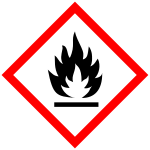Cookie preferences
This website uses cookies, which are necessary for the technical operation of the website and are always set. Other cookies, which increase the comfort when using this website, are used for direct advertising or to facilitate interaction with other websites and social networks, are only set with your consent.
Configuration
Technically required
These cookies are necessary for the basic functions of the shop.
"Allow all cookies" cookie
"Decline all cookies" cookie
CSRF token
Cookie preferences
Currency change
Customer recognition
Customer-specific caching
Individual prices
Region preferences
Selected shop
Session
Comfort functions
These cookies are used to make the shopping experience even more appealing, for example for the recognition of the visitor.
Note
Derivatization reagents for GC, silylation, MSHFBA
Product configuration
Do you have any questions?
Please contact us. Select variant first $0.00 * (0% Saved)
*taxes and shipping not included
Item number: 701260.110 027030385010
Package unit 1 Pack(s) MSHFBA is used either alone or in combination with a catalyst (TMCS, TSIM) or another silylation... more
MSHFBA is used either alone or in combination with a catalyst (TMCS, TSIM) or another silylation reagent with or without solvent. The by-product N-methylheptafluorobutyric amide has a lower retention time than the silylating reagent. Especially useful for flame ionisation detection due to the large ratio of fluorine to silicon of 7:1, since degradation of the excess of MSHFBA does not produce SiO₂ but volatile, non-corrosive silicon compounds. These products contain harmful substances which must be specially labeled as hazardous. For detailed information please see SDS.
Are you interested in real-world applications for this product? Click here to view the application notes.
| Selling unit | 1x10 mL, 1x100 mL, 5x10 mL, 6x100 mL, 20x1 mL |
| Method | Gas chromatography (GC), derivatization |
| Composition | N-methyl-N-trimethylsilyl-heptafluorobutyramide (MSHFBA) |
| Derivatization type | Silylation |
| Recommended application(s) | Alcohols, Amino acids, Carboxylic acids, Derivatization, Phenols, Primary and secondary amines |
| Storage temperature | 2–8 °C / 36–46 °F |
| Hazardous material | Yes |


WARNING
H226 Flammable liquid and vapour.H302 Harmful if swallowed.H315 Causes skin irritation.H319 Causes serious eye irritation.
P210 Keep away from heat/sparks/open flames/hot surfaces. No smoking.P233 Keep container tightly closed.P240 Ground/bond container and receiving equipment.P241 Use explosion-proof [electrical/ventilating/lighting] equipment.P242 Use non-sparking tools.P243 Take precautionary measures against static discharge.P264 Wash hands thoroughly after handling.P264 Wash hands thoroughly after handling.P264W Wash with water thoroughly after handling.P270 Do not eat, drink or smoke when using this product.P280 Wear protective gloves/protective clothing/eye protection/face protection.P280sh Wear protective gloves/eye protection.P280sh Wear protective gloves/eye protection.P301+312 IF SWALLOWED: Call a POISON CENTER/doctor if you feel unwell.P302+352 IF ON SKIN: Wash with plenty of water.P303+361+353 IF ON SKIN (or hair): Take off immediately all contaminated clothing. Rinse skin with water [or shower].P305+351+338 IF IN EYES: Rinse cautiously with water for several minutes. Remove contact lenses, if present and easy to do. Continue rinsing.P330 Rinse mouth.P332+313 If skin irritation occurs: Get medical advice/attention.P337+313 If eye irritation persists: Get medical advice/attention.P362+364 Take off contaminated clothing and wash it before reuse.P370+378 In case of fire: Use suitable extinguisher media to extinguish.P403+235 Store in a well-ventilated place. Keep cool.P501 Dispose of contents/container to regulated waste treatment.P501 Dispose of contents/container to regulated waste treatment.






